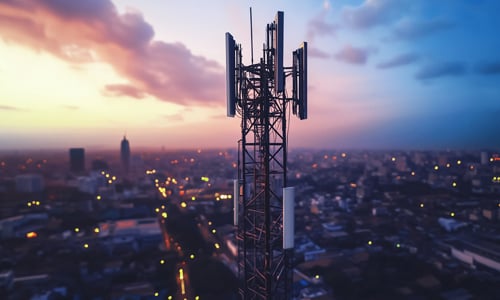White space fidelity
In today’s technological environment the target is absolute use. Need is the mother of invention. As such, white space fascinates for its viability as a complementary offering. Here, the objective is to provide guidance on the employment of white space (WS) in wireless communication.
Wireless spectrum is a hot commodity, and that has prompted regulators to take a hard look at newly available frequency bands freed up in the transition from analog to digital television. Referred to as white space, these spectrum bands are in high demand, largely on account of their ability to augment other wireless technologies.
When Steve Jobs wanted to demonstrate Iphone-4; it was threatened due to bulk use of Wi-Fi in the room. This elucidates need of use of white spaces.
White space allows secondary users to use the portions of the spectrum not currently in use by a primary user, and on an unlicensed basis. The unlicensed user must not cause interference. The Unlicensed user cannot expect channel interference from interference occupied TV channels, ideally.
White-space networks, as mentioned above, use high-frequency radio normally reserved for television broadcasts, and transmit in the space between TV channels. This intact radio bandwidth is, as it turns out, incredibly useful for wireless data transfer. Though the unused TV channel varies with location, the devices will have the flexibility and agility to get located and operate on the unused channels, regardless of the device location. This “opportunistic behavior” of spectrum plays a key role in white space fidelity. This model will help for enabling access to other spectrum bands and improving spectrum efficiency.
Multiple companies have displayed a high level of interest in wireless communication, creating a strong incentive to combine Wi-Fi and white-space technology; however, there are significant challenges involved. On the positive side, stronger Wi‑Fi would help ease the burden of traffic congestion caused by too many people trying to access the same network. Also, wireless carriers are considering Wi-Fi to have offload traffic from cellular networks as well. On the negative side; if wireless carriers are to charge subscribers for using their Wi-Fi services then users may demand that moving from one hotspot to another becomes as seamless as roaming on a proprietary cellular network.
Implication No. 1: Standard residential Wi-Fi offers a limited set of channels and has become increasingly popular for use within homes. Extra frequency bandwidth for wireless data transfers will help compensate for increasing degradation in networks as channels interfere with one another.
For example, Ethernet One solution components like the BV-3100 or BV-10 can be used to test the Ethernet traffic between a network hub location and the location where the white space client’s premises equipment (CPE) is placed.
Rural broadband: TV white space spectrum is characterized by large amounts of geographically available spectrum with excellent propagation characteristics, and is ideal for providing fixed broadband Internet services to locations where it is neither practical nor economical to route cables or optical fiber.
Implication No. 2: The significant range boost may encourage many cities to reconsider offering free or low-cost public Wi-Fi access in many areas. Using the technology currently available, the staggering number of hotspots required for adequate network coverage is encumbering.
Implication No. 3: As such, white-space devices are more likely to complement existing technologies, rather than replace them. By increasing the maximum height above average terrain (HAAT) of sites fixed devices operation can be achieved, provided that modification of adjacent channels (Out-Of-Bond) emission is limited at fixed level & for every category of TV bands devices there will be a slightly increased the maximum permissible Power Spectral Density (PSD). These changes will reduce the operating cost, coverage area will more due to fixed TV band devices.
Hopefuly, very soon we will have vendors bumping up free Wi-Fi in their phones. Best luck, for free Wi-Fi services!
Works in IEEE and IETF
- IEEE 802.22: Enabling Rural Broadband Wireless Access Using Cognitive Radio Technology in TV Whitespaces
- IEEE 802.11af: Wireless LAN in the TV White Space
- IEEE 802.19: Wireless Co-existence Working Group standard, which enable effective use of TV white space by
- IEEE 802 algorithms via coexistence methods
- IETF: PAWS WG Protocol to Access to White Space Database
Useful links:
- Microsoft Reinvents Wi-Fi for White Spaces
- White Space Networking with Wi-Fi like Connectivity
- Wi-Fi And White Space Combo Promises Better Broadband Wireless




